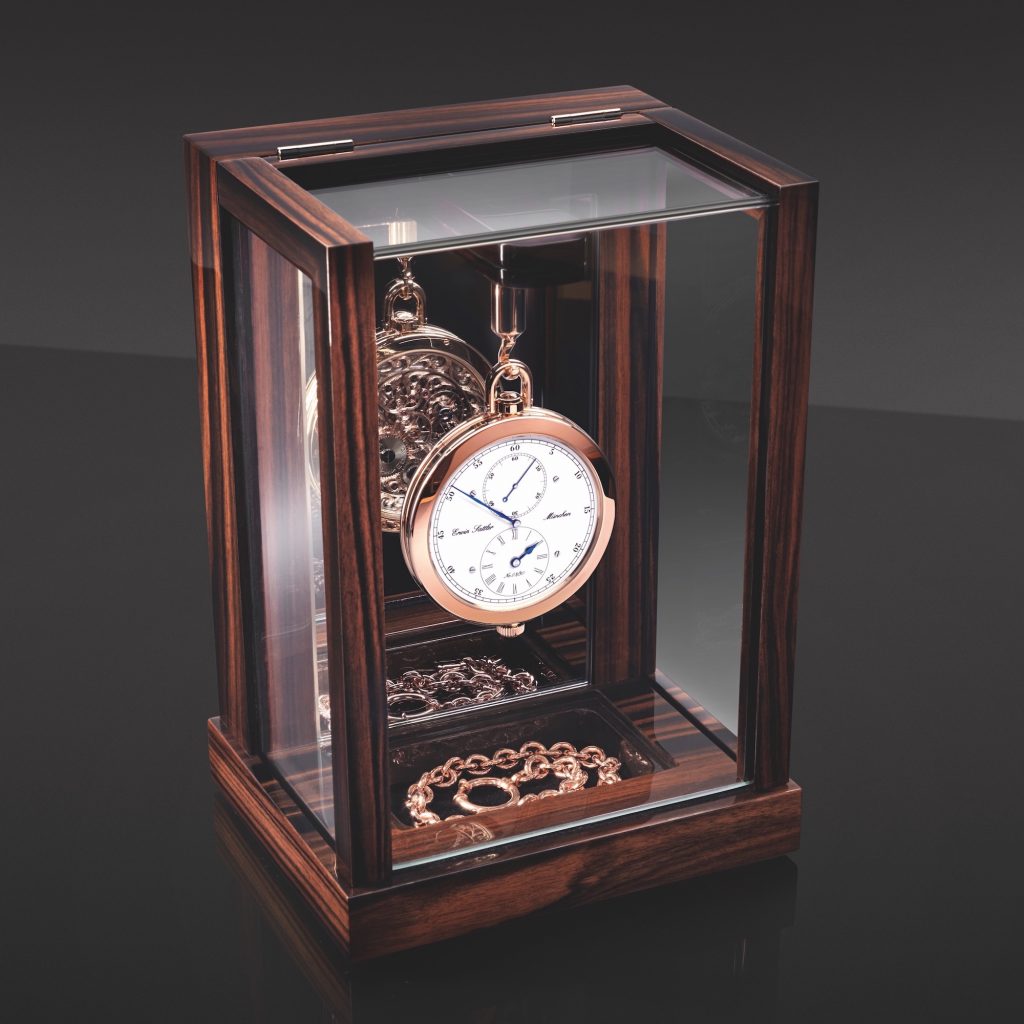The Tourbillon – A Highly Complicated Watchmaking Specialty
04. Dec 2021
Towards the end of the 18th century, there was only one type of timepiece that was suitable for showing its owner the correct time both at home and on the road – the pocket watch. Due to its exclusivity, caused by its high price, it was exclusively reserved for the upper class.
Later after industrial production methods were introduced into watchmaking, towards the middle of the 19th century, it was possible that pocket watches could be produced more cheaply and were thus affordable also for the middle-class.
Pocket watches, or also sack watches or tailcoat watches were usually provided by the gentlemen of the society, with chains, carried in their trouser pockets or also jacket or vest pockets.
Because of this carrying position, i.e. always vertical (but in the different “hanging” positions), the problem arouse, that these watches had a certain inaccuracy due to the center of gravity error of the balance wheel (in combination with gravity), the so-called position error. Another cause of this problem were additionally, the compensation balances, which were common at that time. These, consisting of a sliced bimetallic rim, compensated (for) the balance’s moment of inertia at various temperatures, but in return increased the center of gravity error.
The famous watchmaker Abraham-Louis Breguet recognized this problem and the cause. In order to that he subsequently devoted himself to this complex error. He developed the tourbillon (translated “whirlwind”) between 1779 and 1800. This is a highly sophisticated mechanism that compensates for the balance’s center of gravity, which lies outside the axis of rotation, and the resulting rate deviations. A pocket watch does not take a fixed position when worn, which means, the center of gravity of the balance wheel can be located above, below or even to the right or left of the rotation axis. So this change of position causes the watch to gain or lose time, which can’t be controlled. The basic idea of Breguets’ invention was to let the complete system, including the center of gravity error, rotate around its own axis.



Now the entire escapement (the echappement) passes through all positions during a recurring time interval. The result is that the process in one position balances itself out with the corresponding following in the other position, and thus the deviations can be significantly reduced or, ideally, cancel each other out. Breguet initially chose the minute as the time interval, which means that once a minute the entire escapement rotates around itself – consequently the name “minute tourbillon”.
The technical and horological implementation was of course extremely difficult. He assembled balance, hairspring, anchor and escape wheel inside a mobile cage. This unit, screwed on the fourth wheel pinion of the movement, had to be made perfectly, of course. Lowest possible weight, self-balanced in itself and minimal tolerances were necessary to get the best results. Inside the cage, the balance wheel now oscillates exactly concentrically above the fourth wheel pinion, from which the cage is permanently turned around itself within one minute. While the cage is turning, the escapement wheel pinion rolls on the fourth wheel, which is concentrically mounted on the movement and thus makes the balance oscillate. In 1801, Abraham Louis Breguet received the much longed-for patent for his invention “Régulateur à Tourbillon” in France.
As a result, he was assured that he alone would be allowed to manufacture tourbillons for the following 10 years. In the years that followed, Breguet probably made just over 26 of these tourbillon watches, but all of them in the most varied designs.
This absolute top performance in watchmaking was at that time an enormous improvement in the field of portable watches.
The tourbillon is often treated as a complication, but strictly speaking this is not true. The tourbillon does not represent an additional function, but it can nevertheless justifiably be considered one of the most complex mechanisms in watchmaking.
The exclusivity and also the complexity of a watch with a tourbillon was and still is evident today through the small quantities and the correspondingly high prices.
Due to innovative manufacturing methods and new materials, tourbillons are no longer necessary to improve the accuracy of the watch. They embody what is technically feasible to eliminate certain disturbing factors and are used today by the most renowned watchmakers to underline their high technical and craftsmanship competence. The owners of such watches also document their love for the detail.



